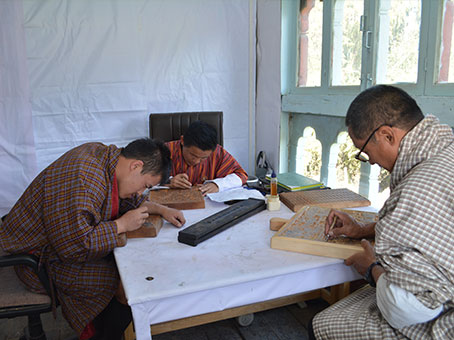Bhutan has a long tradition of printing texts from hand-engraved woodblocks (xylographic printing). In the fifteenth century, the Bhutanese Scholar-saint Terchen Pema Lingpa, an ancestor of our Royal Family, turned Bumthang in Central Bhutan into one of the country’s first printing centers. The woodblocks he engraved for 614 folios of his collected works are still preserved at Kunzang Drak Temple in Bumthang.
Many other dzongs including Punakha Dzong and temples in Bhutan also had printing establishment and large collections of woodblocks. Unfortunately over the centuries several of these printeries were destroyed either by fire or other natural calamities thus leading to the destruction of most of the texts and woodblocks originally housed therein.
Fortunately, the National Library holds prints of many of the old xylographic editions for which the original woodblocks no longer exist. Until recently National Library continued to use this process for the purpose of printing important religious texts but as of today only woodblock engraving practice is being maintained but not printing. In 1973, Her Majesty the Queen Mother, Azhi Kesang Choeden Wangchuck commanded the then Director of National Library of Bhutan, Lam Padma Tshewang, to maintain this tradition. The National Library then started collecting and storing wooden printing blocks and, under the patronage of Her Majesty, the Library commissioned the engraving of woodblocks for the entire 12 volume collected works of Kunkhyen Pema Karpo (Kun mkhyen bka’ ‘bum) and other works. The NLAB then carried out engraving of 272 blocks of Thri Yeshe Lama, the Dzogchen teachings of Nyingma tradition. Currently, 232 blocks of Peling Namthar Yoezer Kunzey is being engraved.

